
6 Feb, 2013
Australian Tourism Pioneer Shares Historic Photographs of Post-War Cambodia
PHNOM PENH, February 5 – The Bophana Audiovisual Resource Center is to present CAMBODIA REVISITED: LIFE AFTER THE KHMER ROUGE, a photographic exhibition by Australian tourism industry director Paul Cummings. The work which is on display for the first time is a selection of approximately 25 of the 500 images which have been donated to the Bophana Center’s database. The exhibition uncovers the daily life of Cambodia in the 1980s, at a time when the country was recovering and rebuilding from the human and physical destruction of the Khmer Rouge years.
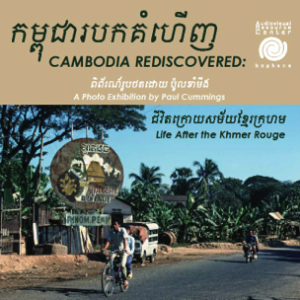 Opening Ceremony will take place on Friday, February 15 at 6:00pm. The exhibition will run from February 15 to March 15, 2013. All events will be at Bophana Audiovisual Resource Center, #64 Street 200 (Okhnia Men), Phnom Penh, Cambodia.
Opening Ceremony will take place on Friday, February 15 at 6:00pm. The exhibition will run from February 15 to March 15, 2013. All events will be at Bophana Audiovisual Resource Center, #64 Street 200 (Okhnia Men), Phnom Penh, Cambodia.
Purpose and Context of the Exhibition
Even though more than three decades have passed, the world still associates Cambodia with the “Killing Fields” period of 1975-1979. In those few years, the fanatical Democratic Kampuchea regime almost succeeded in destroying Cambodian culture. The cities were evacuated and their population put to work in the fields. Education, markets, religion, family life, money were all abolished and the entire country became a vast and somber work camp. Even color was gone from people’s lives and black clothing mandated. Millions of Cambodians died or fled the country and educated or skilled people were systematically persecuted. Phnom Penh became a ghost city of empty buildings and streets. The borders were sealed and little information either entered or left the country. Indeed, the world remained largely ignorant of the scale of the horror until the overthrow of the regime in January 1979.
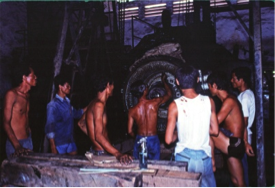 |
| Copyright Paul Cummings |
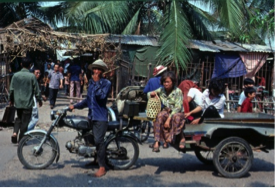 |
| Copyright Paul Cummings |
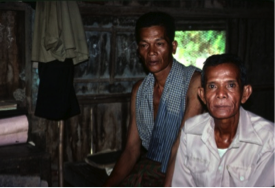 |
| Copyright Paul Cummings |
The following decade was also a time of hardship, though to a far lesser degree. The country remained poor and isolated with the new regime recognized and supported by few nations outside the Soviet bloc. The U.N. and most Western nations refused, despite much controversy, to recognize the new government. Almost the only communications links were with Vietnam, itself almost as poor and isolated. Fighting continued for many years in border regions where the Khmer Rouge and other forces had regrouped. The highways remained in barely passable condition and were dangerous from time to time.
And yet, the 1980s were also a time of hope. Some aid trickled in from international organizations and friendly nations. Relative peace had descended on most of the country. People for the first time in years had freedom of movement and in vast numbers travelled the country to return to their home towns and villages and reunite with their families. Markets reopened and currency was introduced. Schools and other institutions of learning began to function again as did Phnom Penh’s few factories. Temples, festivals, traditional music and dance all started to take their place in daily life once more. Color returned to people’s lives and tentative smiles to their faces. In short, following a near-death experience Cambodia had begun to come back to life.
Paul Cummings first visited Cambodia in 1983, hoping to organize the reopening of tourism to the renowned sites of Angkor, the monuments of Cambodia’s glorious past. Soon after, his company was successful in operating the first post-war tour to Phnom Penh and Angkor and a small but steady stream of tourists followed experiencing not only the famous historic sites but also Cambodia’s remarkable people. While naturally impressed by Cambodia’s extraordinary cultural heritage, visitors were invariably moved by the courage, resourcefulness and tenacity of a people making new lives in a devastated country. Cambodians finally had a chance to tell their own story. The long years of isolation came to an end in 1991 with the signing of the U.N Peace Accord.
With unusual access to Cambodia in the early years after the fall of the Khmer Rouge, Paul had the opportunity to photograph not only the tourist sites but also the schools, factories, orphanages and cultural events of the country. He is donating his archives to Bophana and the present exhibition forms a selection of the material. The photographs presented are a record of his travels and of the re-awakening of Cambodian culture and life during this period. It was indeed a decade of hardship but also one of hope and renewal. The artist humbly presents it as a tribute to the millions of Cambodians of all walks of life who remade their own lives and that of their country during those difficult years.
Artist Background
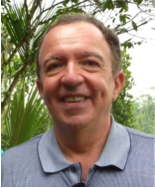 Paul Kominatos Cummings was born in Sydney, Australia in 1949, the son of Greek parents formerly resident in China and the third generation of his family to engage in business in Asia. Holding a Bachelor’s degree in Electronic Engineering and a Masters in Business Administration, he fell in love with Asia while travelling overland from Europe to India via Turkey, Iran, Afghanistan and Pakistan in 1973. Noting that after 1975, Vietnam, Cambodia and Laos had become practically inaccessible to tourists, Paul founded a travel company, Orbitours, to specialize in the Indochina region. First visiting Laos and Vietnam in 1979 and Cambodia in 1983, Orbitours became the world’s leading tour company to these destinations handling clients from Western Europe and the USA as well as Australians. In 1992 Paul became a founding shareholder and director of Diethelm Travel Cambodia which remains one of the country’s leading travel firms.
Paul Kominatos Cummings was born in Sydney, Australia in 1949, the son of Greek parents formerly resident in China and the third generation of his family to engage in business in Asia. Holding a Bachelor’s degree in Electronic Engineering and a Masters in Business Administration, he fell in love with Asia while travelling overland from Europe to India via Turkey, Iran, Afghanistan and Pakistan in 1973. Noting that after 1975, Vietnam, Cambodia and Laos had become practically inaccessible to tourists, Paul founded a travel company, Orbitours, to specialize in the Indochina region. First visiting Laos and Vietnam in 1979 and Cambodia in 1983, Orbitours became the world’s leading tour company to these destinations handling clients from Western Europe and the USA as well as Australians. In 1992 Paul became a founding shareholder and director of Diethelm Travel Cambodia which remains one of the country’s leading travel firms.
==========
| The following is a clipping of the news story that appeared in the Bangkok Post in June 1983 quoting Mr Cummings’ first interview with TTG Asia’s then Thailand correspondent Imtiaz Muqbil. |
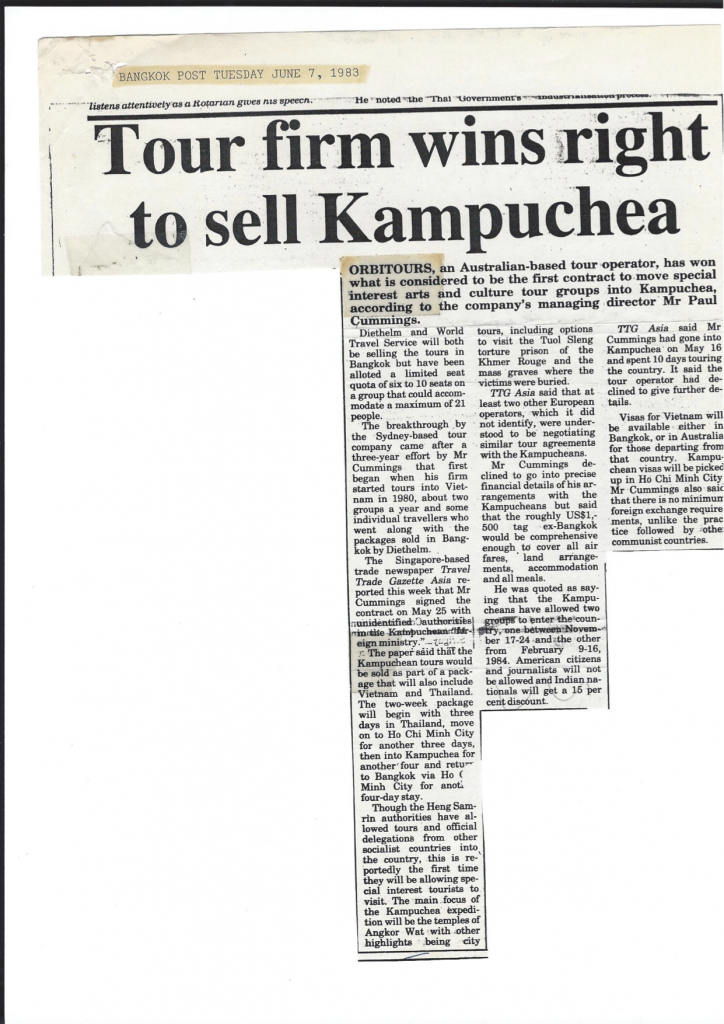 |



Liked this article? Share it!